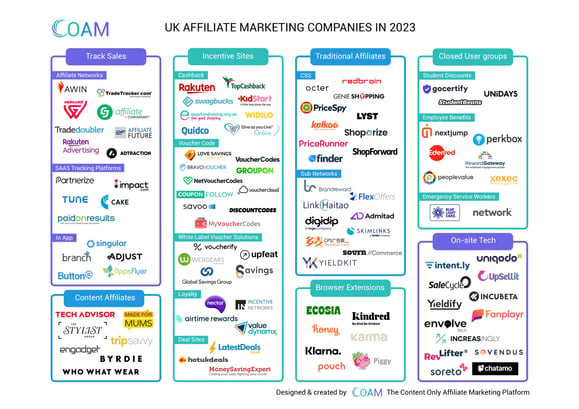PI Live Miami Panel Review: Crossing Channel Boundaries

intent.ly COO Chris Johnson explores topics from his recent panel session at PI Live Miami, where they discussed how best to engage with performance-based tech partnerships and the impacts of crossing channel boundaries.
I had the pleasure of taking part in a panel discussion at PI Live Miami last week that deliberated how best to engage with performance-based tech partnerships across the current affiliate landscape.
There was a diverse mix of tech partners taking part in the panel and a wealth of experience to boot. Lauryn Vaughn, CEO of ReUpp, a buy now sell later tool, and Vikki Danielson, Director of Growth & Partnerships at tvScientific - a Connected TV Advertising & Marketing platform, were sat alongside myself. Naturally as an intent.ly team member I was on hand to offer insight into onsite shopper journey optimisations, and the panel was expertly moderated by CJ’s Tomas Saulsbury-Hunter, VP of Client Development.
As an affiliate aficionado of (almost!) 20 years, the panel discussion raised a number of topics that I feel need further conversations and debate. Some topics were very much recurring (incrementality and attribution) but there were also some new, viable questions that as an industry we have to acknowledge to ensure continued channel investment and growth.
How do we define a ‘tech partner’?
If we dissect the shopper journey from consumer to advertiser over the years, every touchpoint has been disrupted with new innovation. Each innovation offered some form of added value that enhanced the journey. When these innovations were involved in the affiliate channel, the market looked to them as ‘non-traditional’ publishers. Cast your minds back 15 years (if you can!) and cashback/rebate were the new kids on the block, gaining the term ‘non-traditional’ for a short period of time. Soon after that came voucher publishers, then content, then loyalty, then retargeting - so on and so forth, until you arrive in today's market that’s awash with non-traditional ‘tech’ partners.
The difference between the non-traditional partners of today and those before them, is that we are seeing more and more partners enter the space that don’t actually drive additional traffic, instead focusing on traffic optimisation and conversion. As of yet, they don’t fully fit into traditional publisher types and are more varied.
Source: COAM - The Affiliate Marketing Landscape
What are the benefits of a tech partner?
These partners often turn non-affiliate traffic into affiliate traffic, and through the no-risk performance model offer a very measurable and efficient offering to advocating retailers. To arm yourself with similar technology outside of the performance model, you will find yourself tied to long-term contracts and little flexibility on monthly overheads.
I also sometimes hear of a retailer telling our team that they believe they can do what we do themselves, so they don’t need our services. With a wry smile I know for SME and established retailers alike, building similar services in a productive time frame is seldom a reality. Internal product development teams, overall business vision, budget for build costs (to name a few) are often delimiting factors to creating something similar - and even if they do manage to produce a product offering, it doesn’t receive constant focus and ongoing development, meaning it tires quickly and becomes ineffective.
Working with tech partners gives you the benefit of ‘plug and playification’ on a low-risk model that can significantly improve overall channel performance.
What are the channel challenges and considerations when working with tech partners?
I’m often asked this question in many different ways, and naturally there are equally many different answers.
Considerations first. For all the benefits to working with a tech partner (and specifically an onsite tech partner), this requires a level of technical integration. Networks and tracking platforms have made integration much easier with inclusion in their own container tags, however your tech partner should be actively involved in helping you through the next steps of the process, guiding you to the right internal connections, supplying industry standard frameworks, accreditations, content security policies and so on that can give confidence to those who need it.
Clearly define key metrics and test campaigns - and ensure that the right internal stakeholders are involved and aware of the progressing partnership. Don’t forget - this includes your graphic designers and UX teams (crossing channel boundaries) who should be aware of onsite activity.
Be prepared for a performance increase and how this can quickly affect your channel budgets - for even the most seasoned of affiliate programmes, engaging a tech partner whose focus is on conversion can quickly produce positive results. On a CPA basis this will create pressure on your monthly budgets, and you need to communicate effectively internally. Ask your tech partner to justify the sales that they are now generating for you, and how it might be supporting other channels across your business (again - crossing channel boundaries).
What are the key considerations for the industry to continue to benefit from non-traditional partnerships that cross channel boundaries?
Conversations must continue around how the channel’s default payment model is a help and a hindrance when it comes to working with tech partners. Low-risk, performance modelling is an easy enabler to getting started with non-traditional partnerships, but the numbers can stack up quickly, blurring the lines between a brand’s marketing departments (who’s paying for converted CPA leads from disengaged shoppers following engagement with brand PPC activity for example, and where is it attributed internally?) and step-changing the budget ceiling through enhanced website performance rather than additional traffic generation. Are networks and tracking platforms best-placed in the long-term to support this blurring of channel boundaries? I think this topic needs to be front and centre this year.
Equally, I feel the need to place a little more emphasis on advertisers to advocate both the industry and their industry partners within their own businesses. We can and will supply brands with all the data, reporting, case study collateral, campaign ideas and overall strategic direction (if so desired), but I feel the internal education piece would hugely support our efforts in ongoing partner success. Affiliate stakeholders within retailers need to do more to showcase success and upskill their own knowledge of how tech partners in the space operate - to help better facilitate new, innovative, performance partnerships.
Thanks to the PI Live team for a great show in Miami, where we were able to spend time in a more relaxed environment with our partners, new and seasoned.
intent.ly customers typically see a 7x average conversion rate using our suite of proprietary real-time technology solutions. Our overlay campaigns intervene at the right moment, saving the session and providing truly measurable and incremental sales. Book a demo today.


-1.png)